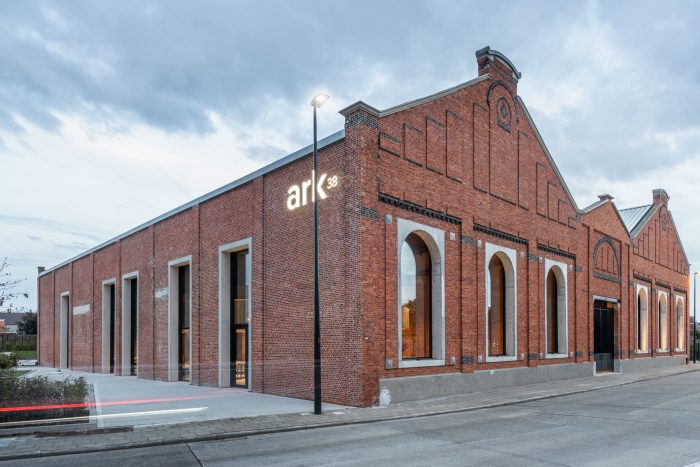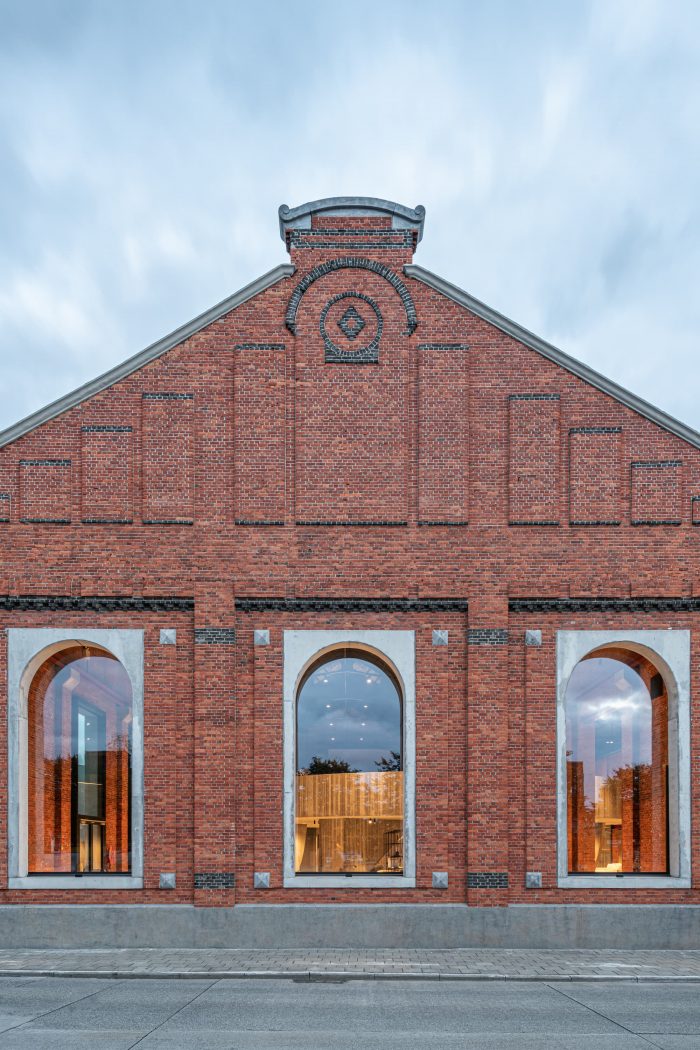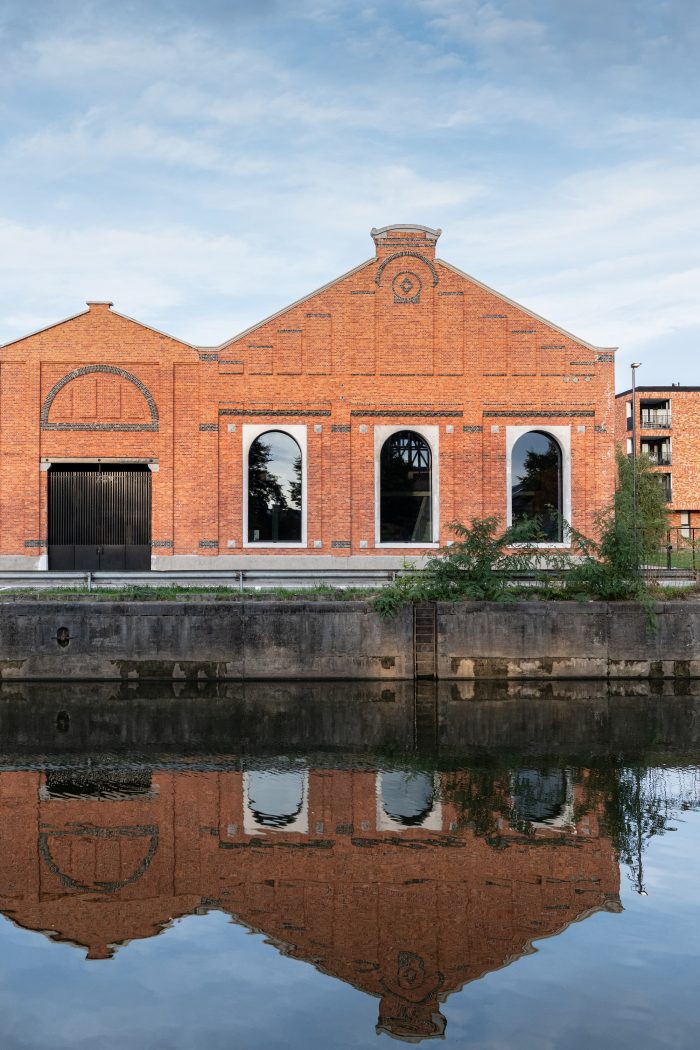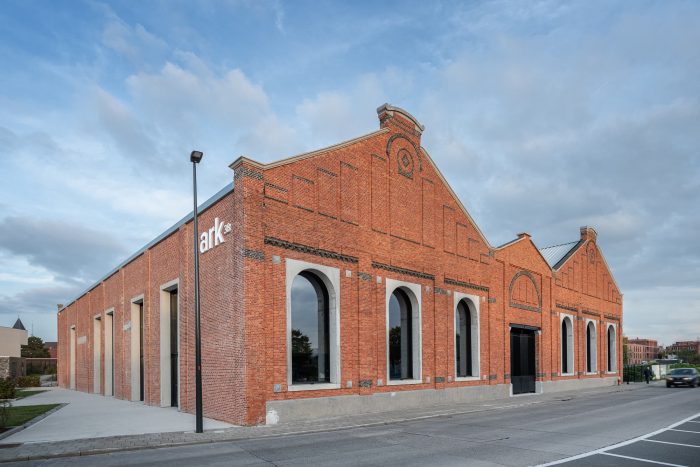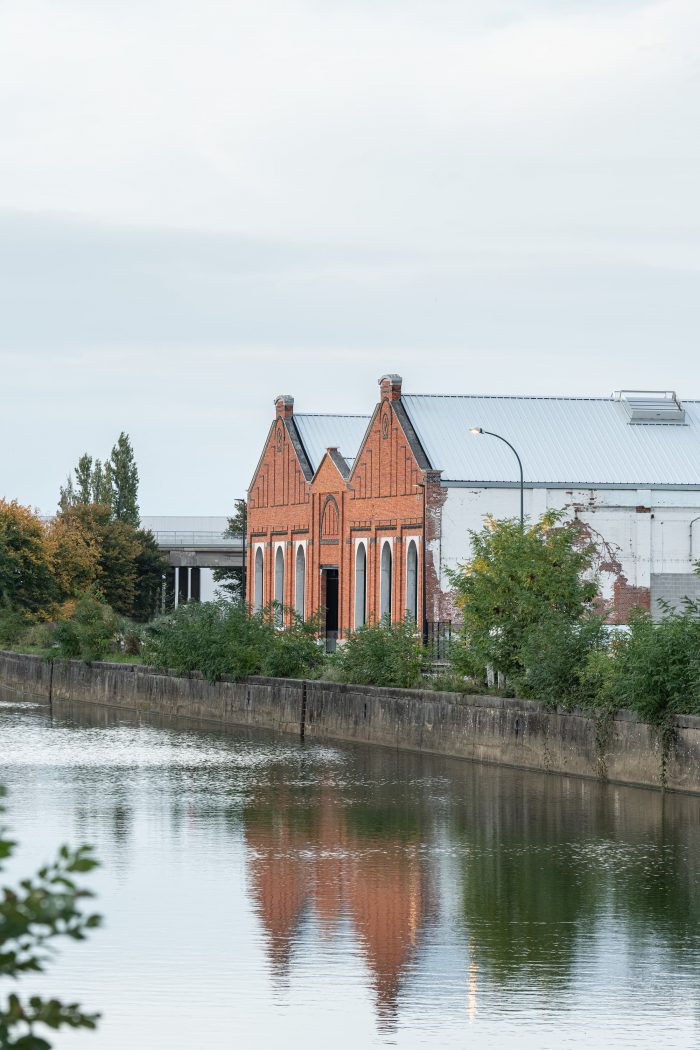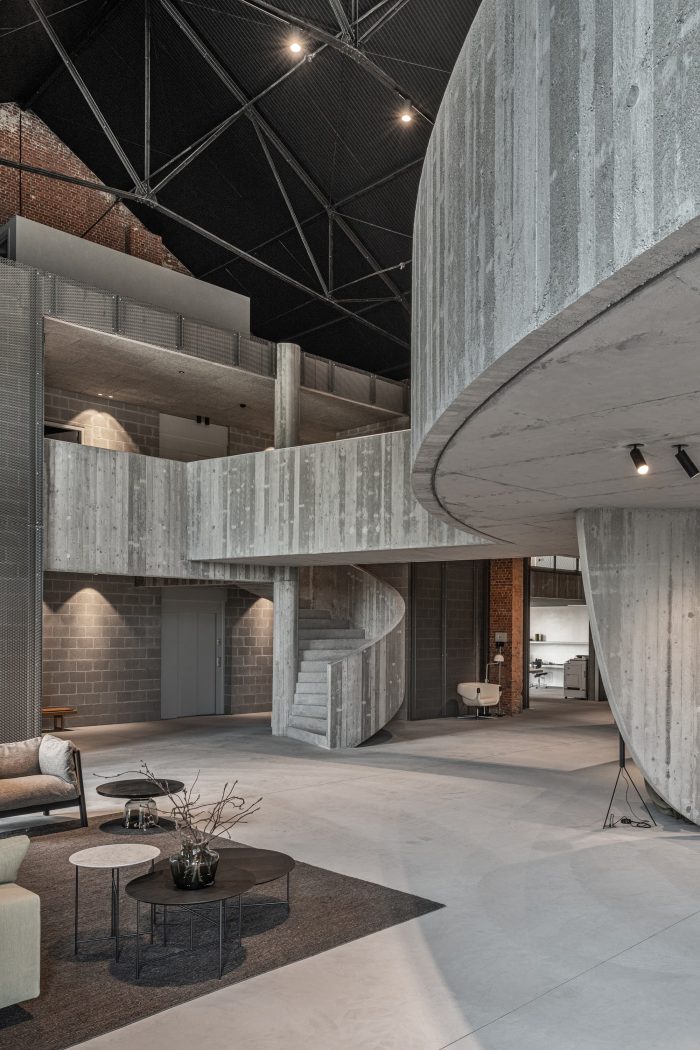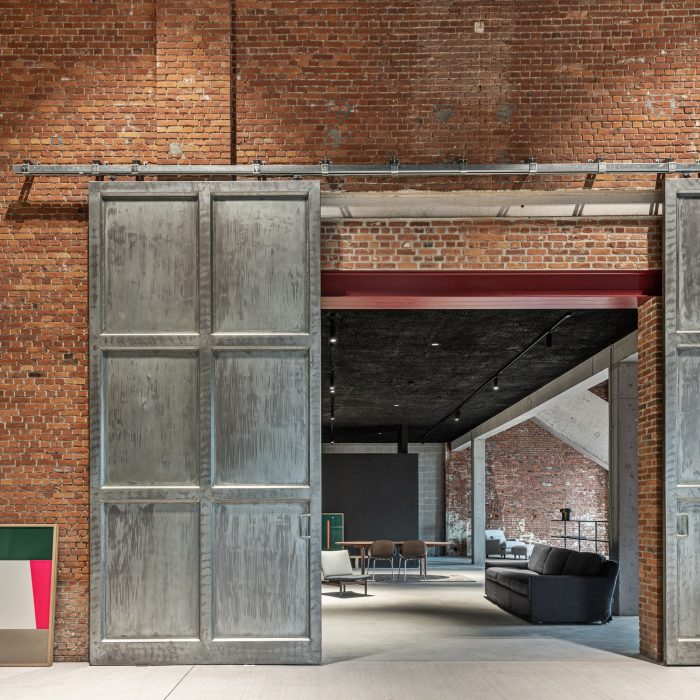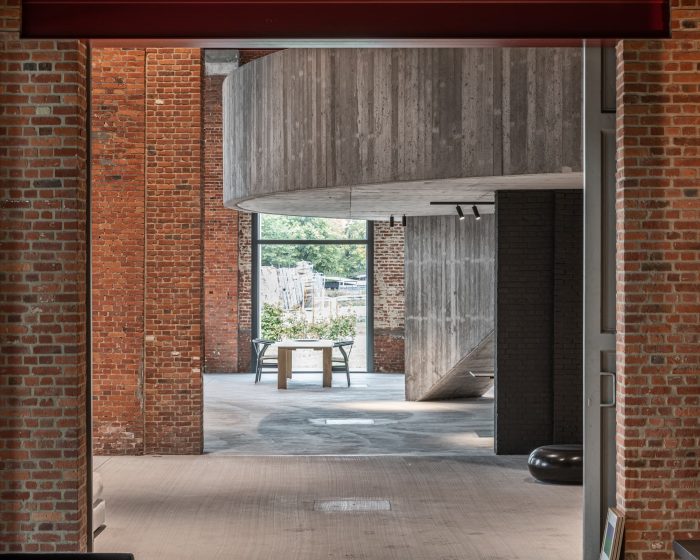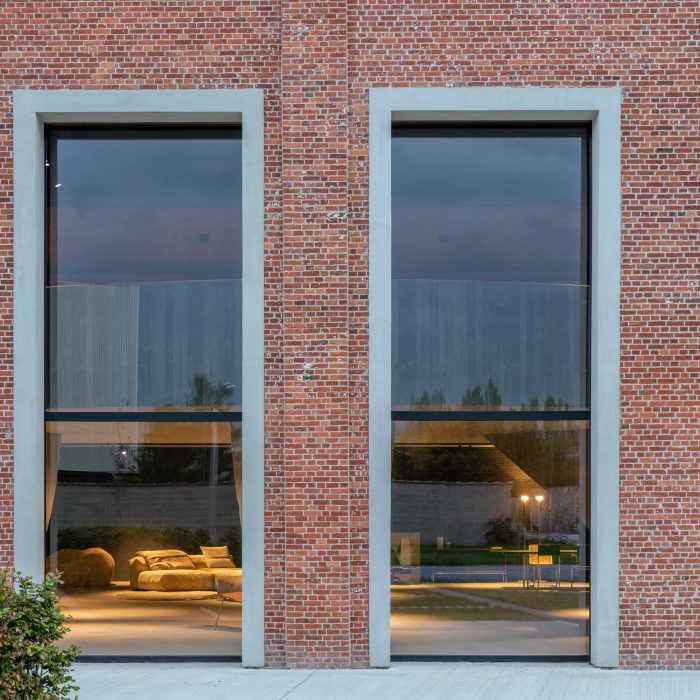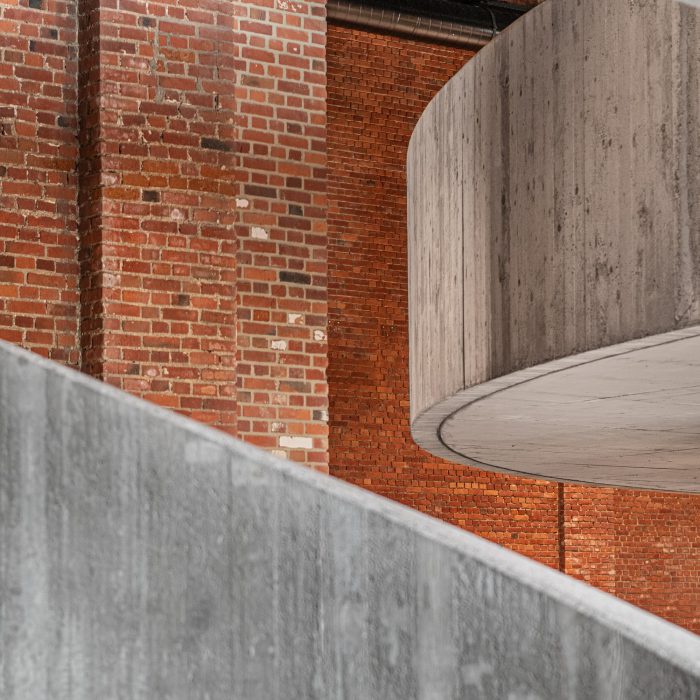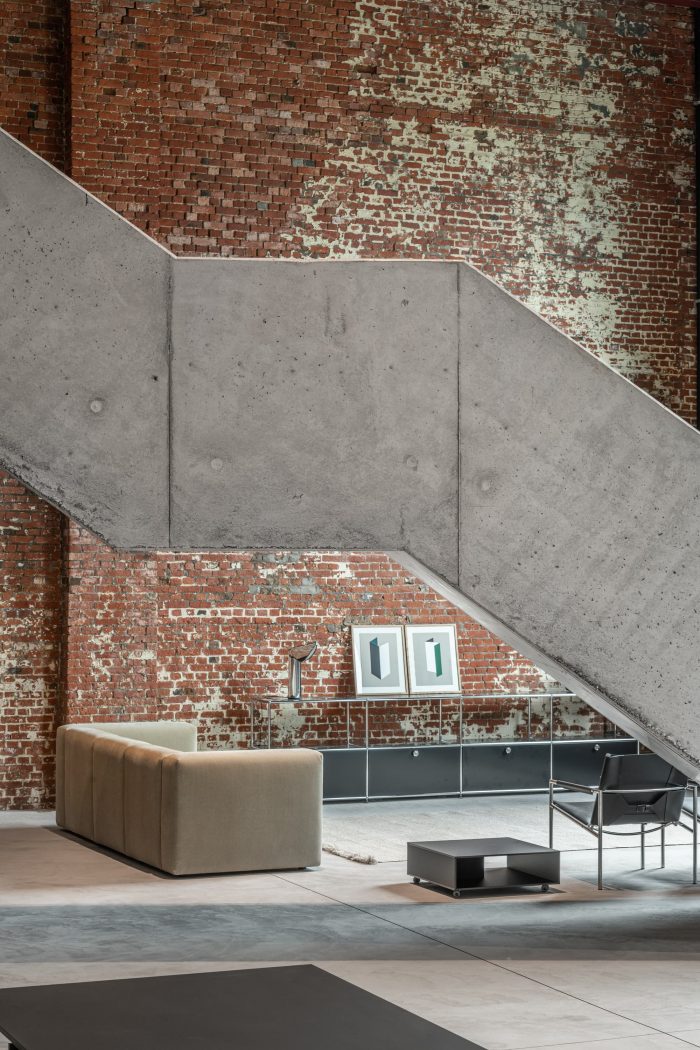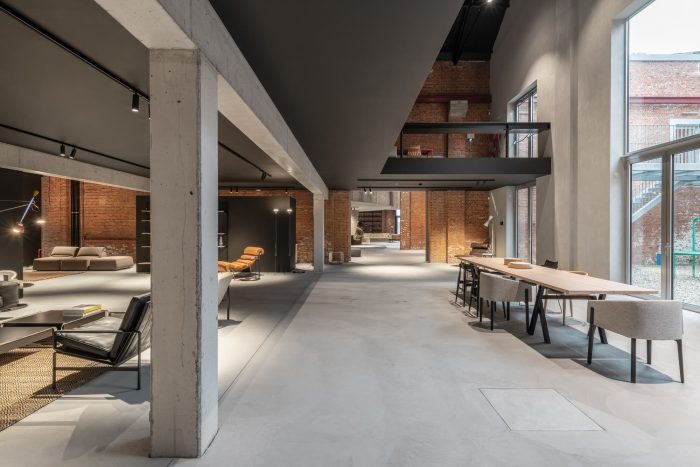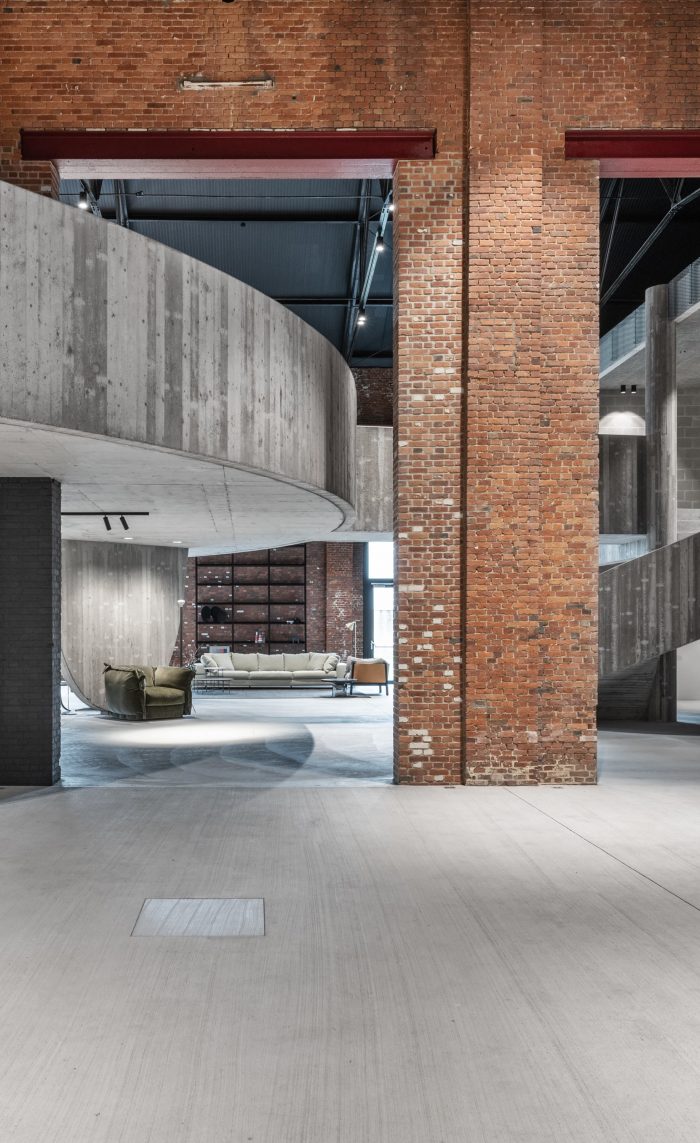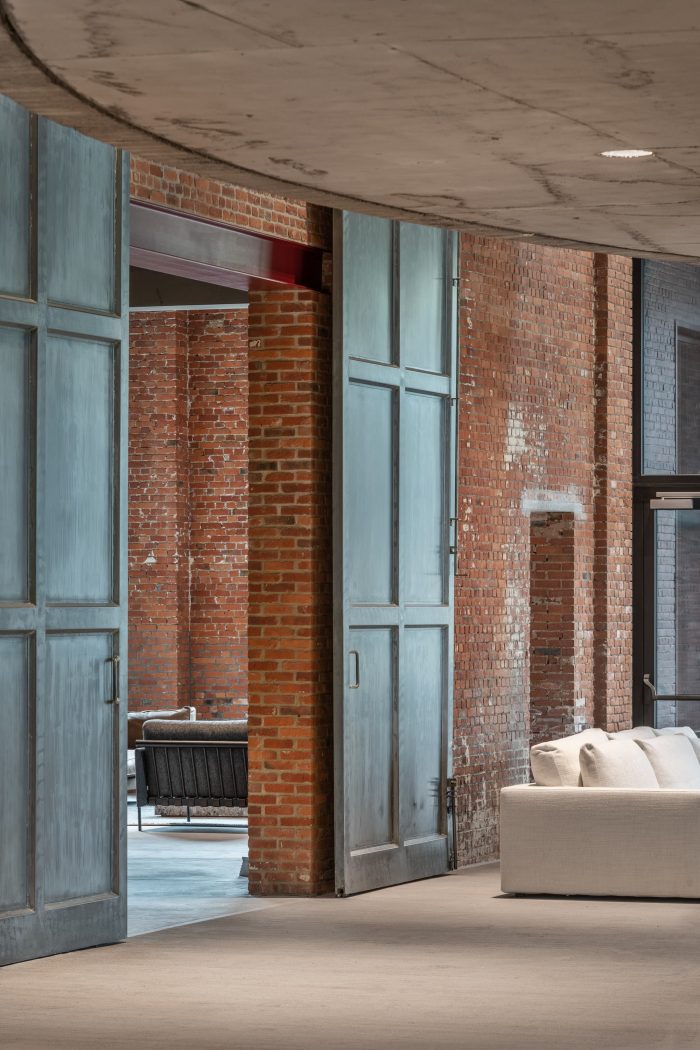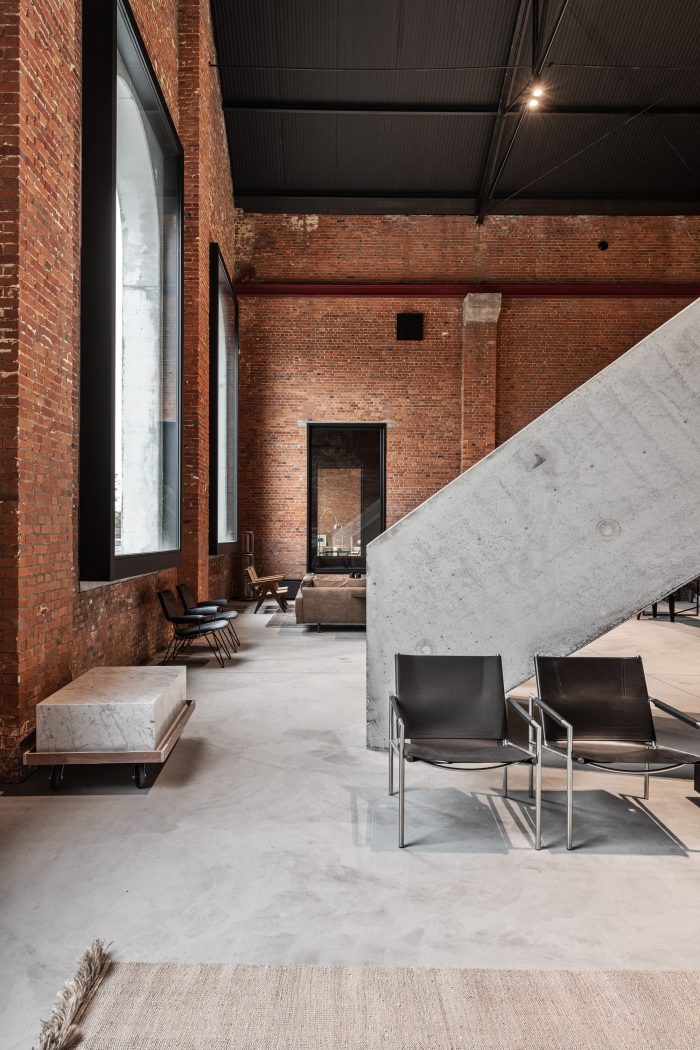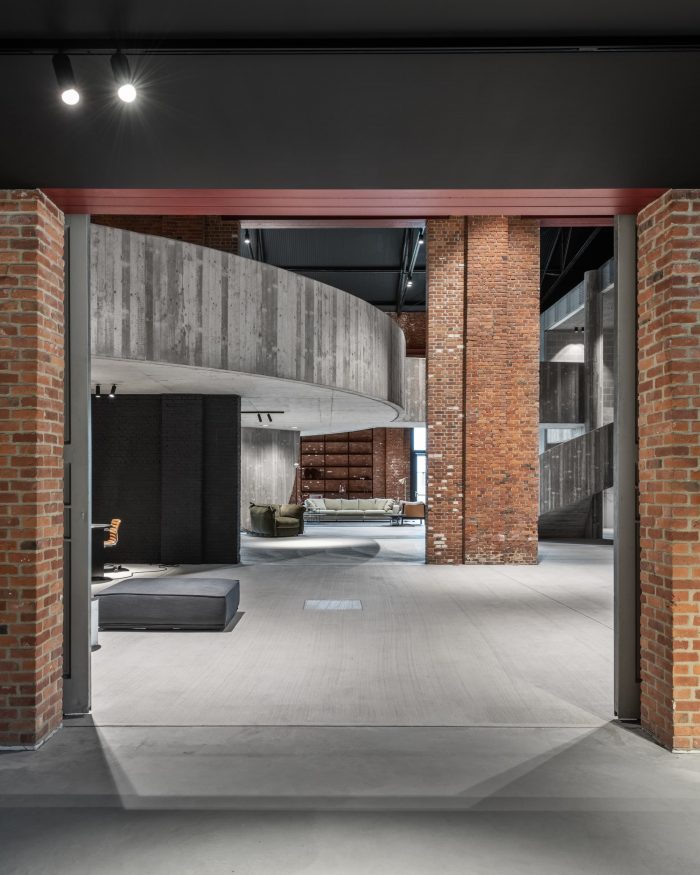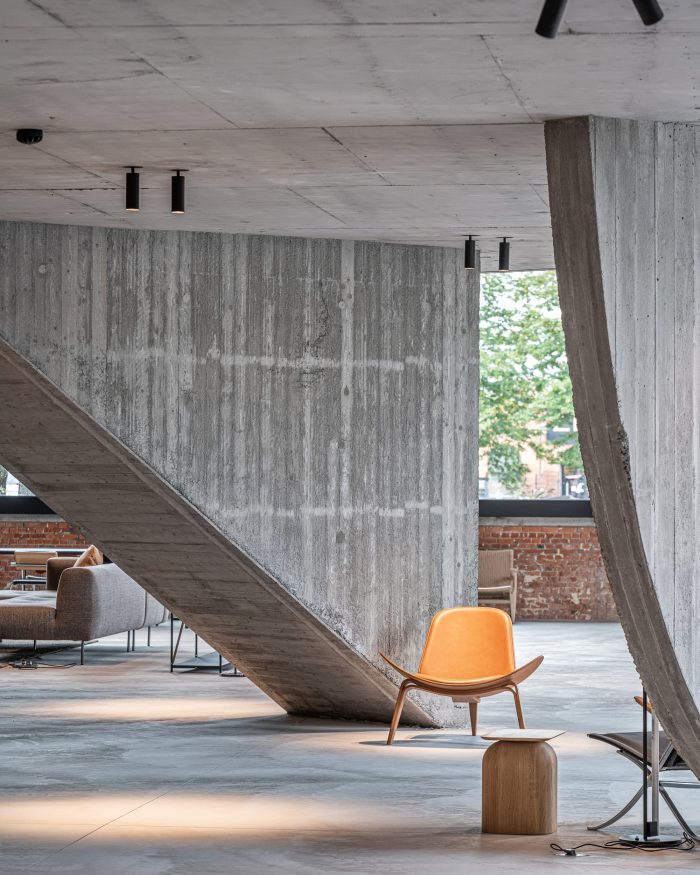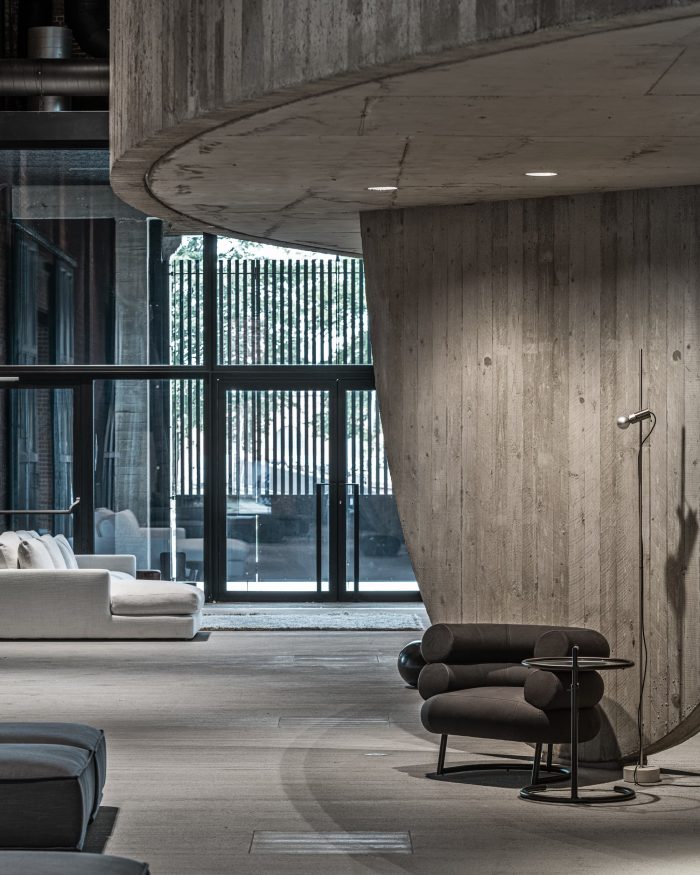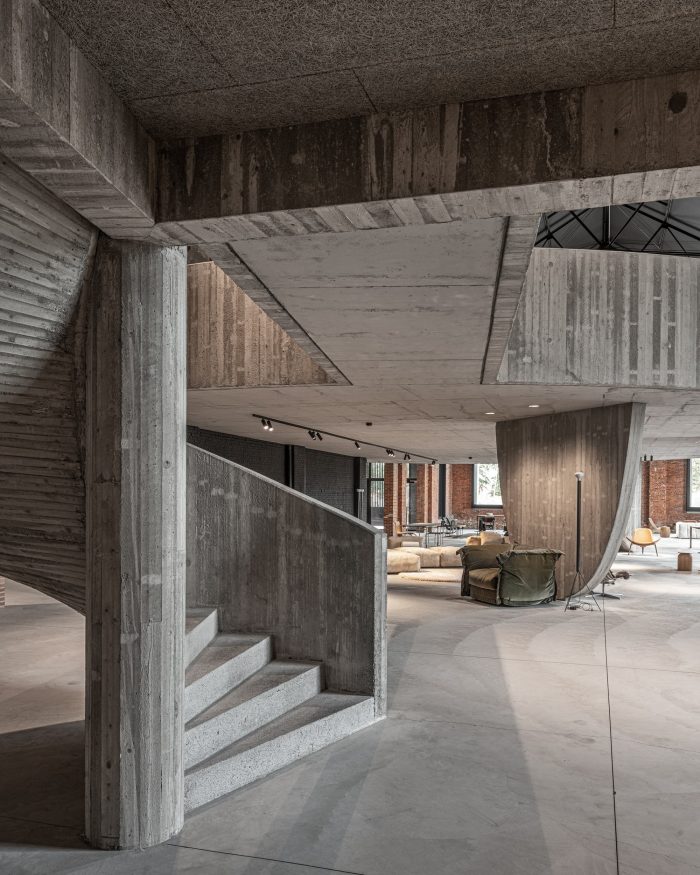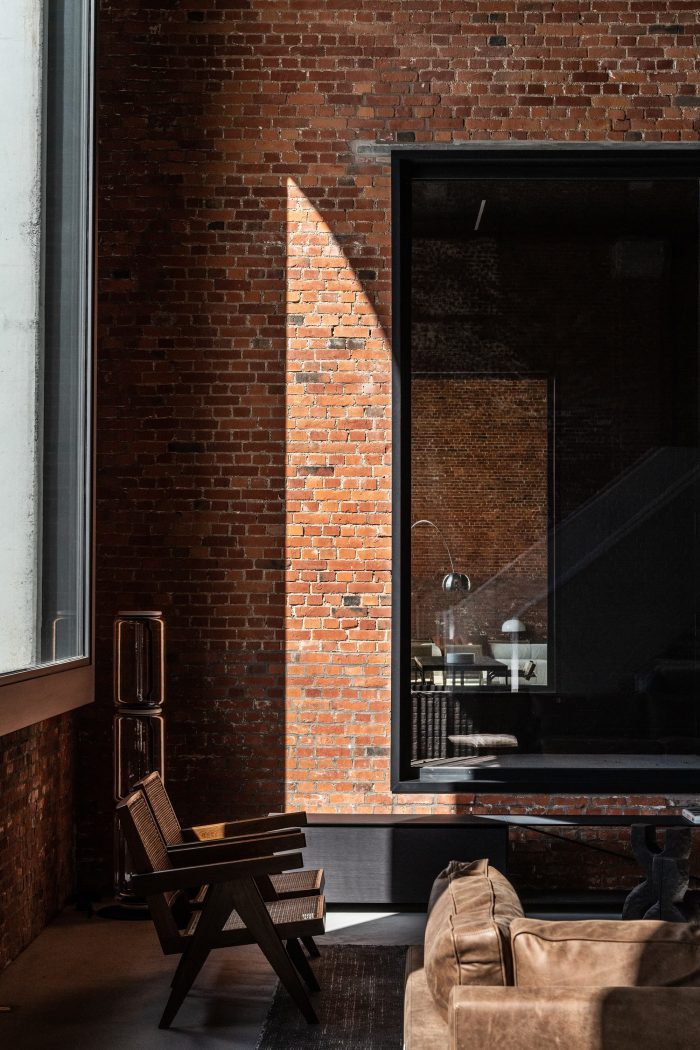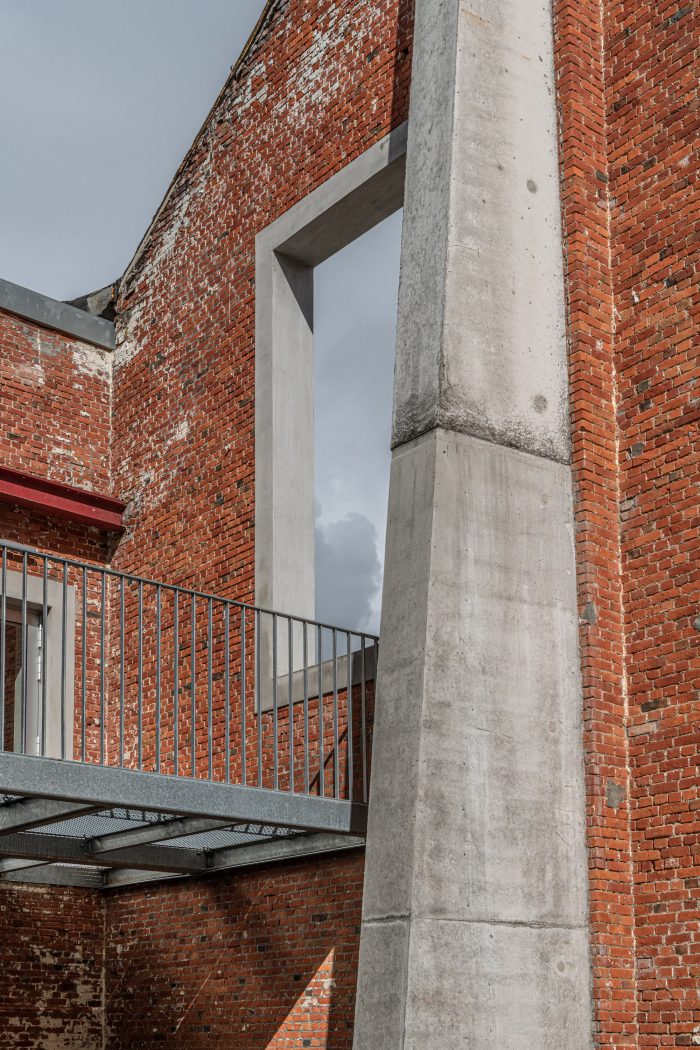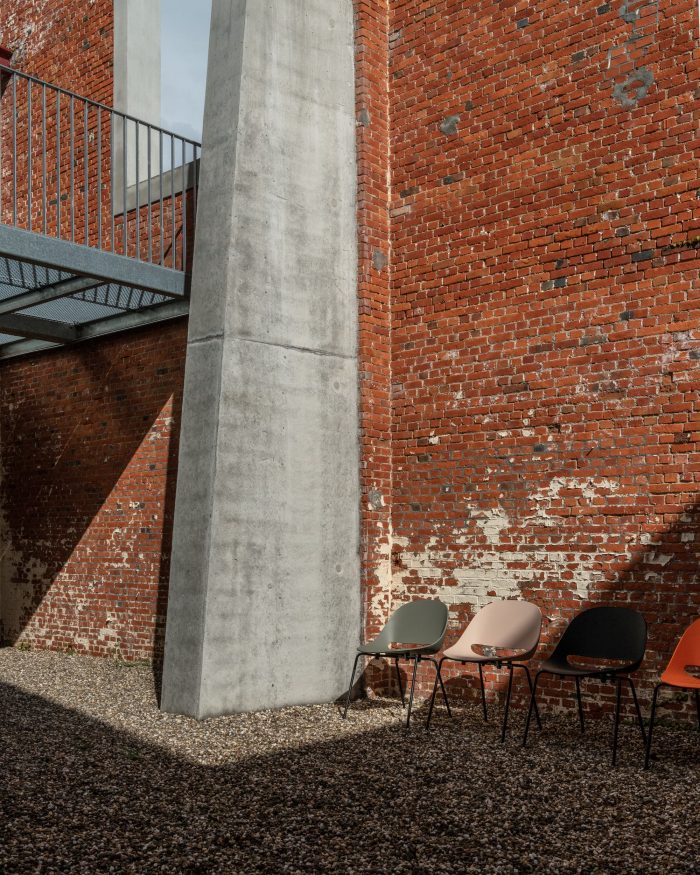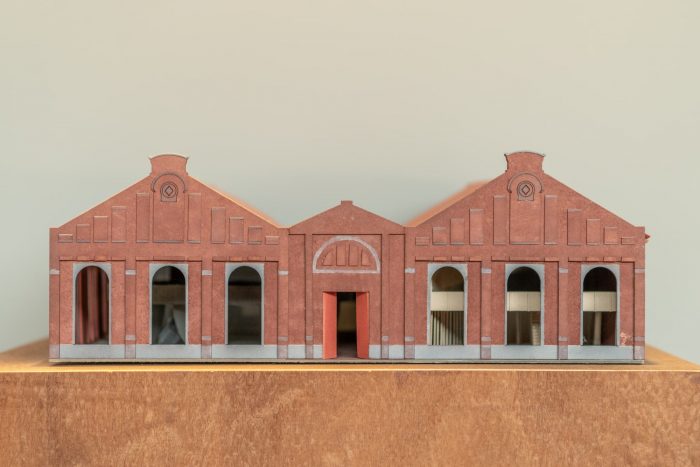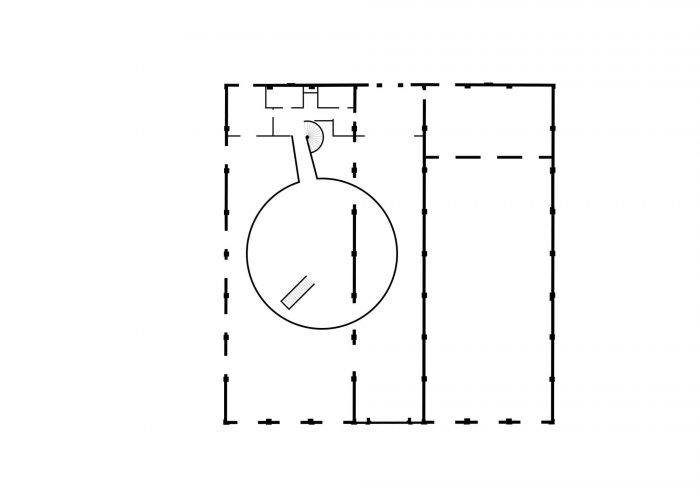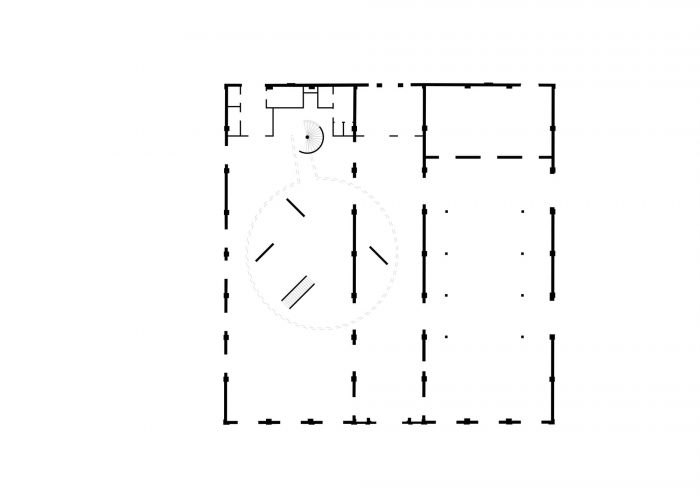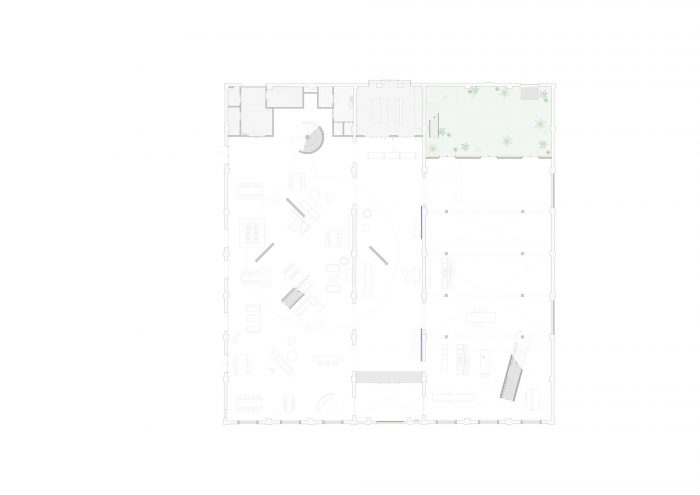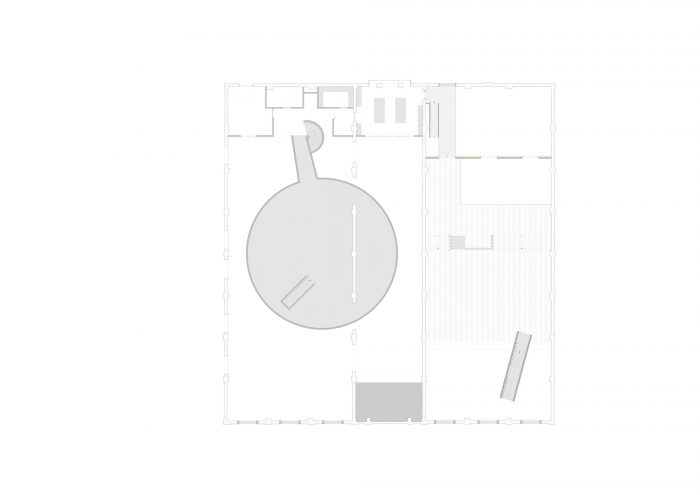历史上,阿尔斯特是丹德河畔的一个重要工业城市。特别是纺织业的蓬勃发展,使该市在18世纪成为该行业的中心。这个黄金时代的遗迹可以在皮埃尔-科内利斯凯(Pierre Corneliskaai)一带找到。它曾经是一家纺织厂,后来在特百惠公司的支持下变成了一家塑料厂,今天则是浴室和厨房专家Sterck NV的设计师家具的新陈列室。
Historically, Aalst is an important industrial town on the Dender. Especially the textile industry flourished a sector of which the city became the epicenter in the 18th century. A remnant of this golden age can be found along the Pierre Corneliskaai. Once a weaving mill, later transformed into a plastic factory under the wings of Tupperware and today a new showroom for designer furniture of bathroom and kitchen specialist Sterck NV.
在翻新这座具有历史价值的建筑时,保留其工业特征是非常重要的。该建筑以典型的砖砌建筑为特色,由三个对称的窗台组成。独特的立面富于美丽的细微的砖雕装饰。虽然该仓库没有被列入受保护的建筑名单,但它被认为是宝贵的建筑遗产。该建筑的外观采用特殊的清洁工艺恢复了其全部的光彩,以增加整个场地和城市的价值。
When renovating this historically valuable building, it was important to preserve its industrial character. The building is distinguished by typical brick architecture and consists of three symmetrical bays. The distinctive façade is rich in beautiful nuanced brick ornaments. Although the warehouse was not included in the list of protected buildings, it is considered a valuable architectural heritage. The exterior of the building was restored to its full glory using a special cleaning process to add value to the overall site and the city.
在仓库原来的正面,可以看到浮雕砖砌的大型矩形平面。在这些平面的节奏上,开口处用顶部圆形的混凝土框架进行了加固。一方面,所使用的混凝土与旧砖形成了很好的对比。另一方面,它也是一个支撑结构。新的外部细木工制品被放置在立面的后面,这样它就被新的混凝土结构所隐藏。侧面的立面也开了大窗–与停车场相邻–作为展示窗,将为建筑提供充足的日光。
In the original front façade of the warehouse, large rectangular planes in relief brickwork could be observed. On these planes’ rhythm, openings were reinforced with a concrete frame rounded at the top. On the one hand, the concrete used contrasts nicely with the old bricks. On the other hand, it also acts as a supporting structure. The new exterior joinery was placed behind the façade so that it is hidden by the new concrete structure. Large window openings were also provided in the side façade – adjacent to the car park – which serves as display windows and will provide the building with sufficient daylight.
建筑物的规模要求进行重大的建筑运动,以使三个托架达到作为展示厅的规模。在这里,建筑的结构和家具的安排之间的关系必须仔细确定。因此,在设计内部时,选择使用三种原材料–混凝土、金属和木材–来填充开放的空间,同时由于它们的尺寸而对建筑进行细分。在整个建筑的左边和中间过道,放置了一个混凝土圆盘,放在三个建筑支架上。
The size of the building calls for major architectural movements to bring the three bays up to scale to serve as a showroom. Here, the relationship between the structure of the building and the arrangement of the furniture had to be carefully determined. Therefore, when designing the interior, the choice was made to work with three raw materials – concrete, metal, and wood – that fill the open space while subdividing the building thanks to their size. Throughout the left and middle aisles of the building, a concrete disc was placed, resting on three architectural supports.
在展示家具时,这些支撑物被赋予了额外的功能,作为背板。圆盘在底层展厅中创造了一个天花板和一个更加封闭的感觉。它还在原本高大的开放空间的上层提供了额外的可用地板空间。这个新创建的楼层可以通过两个宽敞的混凝土楼梯(一个俯仰式楼梯和一个螺旋式楼梯)进入。一条走道将其与后面的 “金属 “体量相连。
These supports are thereby given an additional function as backs when displaying the furniture. The disc creates a ceiling and a more enclosed feeling in the underlying showroom. It also provides additional usable floor space on the upper floor in the otherwise high open space. This newly created floor is accessed via two generous concrete staircases (a pitch and a spiral staircase). A walkway connects it to the ‘metal’ volume behind it.
穿过左边和中间的过道,在建筑的后面放置了一个金属体积。这个体量容纳了办公室、存储区、厕所、技术室和一个可以组织烹饪演示的厨房。用膨胀的金属覆盖这个体积也在视觉上加强了各种功能。继这个金属块之后,在右过道的水平上,在原仓库的原始边界内,提供了一个大天井。
Across the left and middle aisles, a metal volume was placed at the back of the building. This volume houses offices, storage areas, toilets, technical rooms, and a kitchen in which cooking demonstrations can be organized. Covering this volume with expanded metal also visually reinforces the various functions. Following on from this metal block, a large patio was provided at the level of the right aisle, within the original boundaries of the former warehouse.
一方面,这个户外空间为相邻的大空间提供了光线,在这里提供了灵活的工作场所。另一方面,攀缘植物可以在这里生长,创造一个绿洲,使户外家具可以在一个独特的环境中展示。在右边的部分设计了一个额外的地板,这里盛行着第三种元素–木材。这层楼与前后立面分开,让游客在这个过道里也能继续体验到宽敞的空间。通过前面双高空间中的中央楼梯,人们到达了完全用木质镶木地板完成的两层楼面。
On the one hand, this outdoor space provides light in the large adjacent void where flexible workplaces are provided. On the other hand, climbing plants can grow here to create a green oasis that allows outdoor furniture to be displayed in a unique setting. An additional floor was designed in the right section, where a third element – wood – prevails. This floor is separate from the front and rear façade, allowing the visitor to continue to experience spaciousness in this aisle as well. Via a centrally placed staircase in the double-height space at the front, one reaches the floor that was completely finished with a wooden parquet floor in two levels.
建筑语言和室内选择被用来加强这个有价值的建筑的工业和历史特征,而不落入陈规陋习。该建筑的最终功能创造了内部的张力,作为一个家具的展示厅。展示的现代物品将增强整体性,反之亦然。体验是在广义上寻求的。一个人们可以平静地探索的地方。
The architectural language and interior choices are used to reinforce the industrial and historical character of this valuable building without falling into stereotypes. The building’s ultimate function creates internal tension as a showroom for furniture. The modern items on display will enhance the whole and vice versa. The experience was sought in the broad sense of the word. A place where people can explore in peace.
Architects: Hans Sterck, Objekt Architecten
Area : 2045 m²
Year : 2022
City:AALST
Country:Belgium


